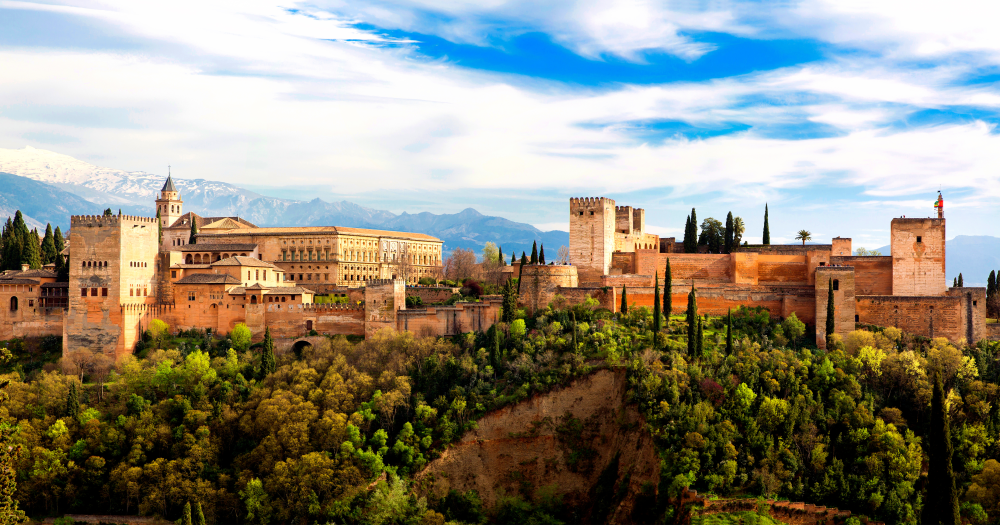Castles are gorgeous, but when they are linked to a unique story of the past, they will last in your memories for a lifetime
In each brick, stone, or chunk of rock that make up the castles that dot Europe from east to west, there is a story. Perhaps it is something simple that no one will ever know: a tiny, private desire thought by the man who placed it there a thousand, even two thousand years ago. Perhaps that building block holds greater significance as the cornerstone that repels an enemy during a decisive battle. Regardless, these materials hold secrets, especially when we take a step back and see what they create as a whole. The wonderful thing is that many of these secrets—legends or stories as we might understand them now—have persisted to this day, being passed from person to person, being inscribed in stone or wood, or being written in dusty tomes. Today, you can step into the monarchical history of Europe through the most human act of all: storytelling. Here are three legends tied to castles that are essential if you want to grasp the past of this remarkable continent.
Alhambra, Spain, The Legend of the Three Princesses
Many centuries ago, when the Moors ruled the sun-kissed and bountiful lands of Spain, a great castle called Alhambra was built. In the early 15th century, Muhammad VIII of Granada was blessed with triplet daughters. Yet upon their birth his astrologers warned that the three princesses must be watched carefully, especially when they reached the age of marriage. Worried about this prediction, Muhammad VIII sequestered them away from Alhambra in a remote castle on the Mediterranean. One day, after many years had passed and the three princesses reached adulthood, a ship anchored in the waters below the castle and there appeared three Spanish knights, prisoners of the Moors. Almost instantly, the princesses fell in love. Concerned about finding the right match for his daughters, Muhammad VIII immediately arranged for them to return to Alhambra. Yet back at Alhambra, the princesses yearned for the knights, bribing the guards to arrange for them to be employed there as workers. With the knights at Alhambra, the princesses plotted their escape: they would scale down the wall of the castle and flee with their lovers. On the chosen night, two of the princesses made it out the window, but the third hesitated, losing her chance at true love. When Muhammad VIII found out, he locked the remaining daughter in her chambers, and, as legend goes, she died there of a broken heart.
Alhambra Castle exists today and is ready to receive you. Visit this remarkable building and search for the chambers where the princesses longed for their gallant knights, though only two achieved their happy ending.

Knight Dalibor’s violin, Prague Castle
On a quiet winter night in Prague and if you have luck on your side, you might hear between the rustle of the snowflakes a lonely tune from a singular violin. That violin, or more accurately, the ghost of it, just might belong to Dalibor the Knight. Unjustly imprisoned in 1498 for allowing rebellious—and hungry—peasants to take shelter in his home, the powers that were sentenced him to death. Yet during his incarceration at the castle in Prague, Dalibor did something remarkable: he taught himself how to play the violin. Night after night as he mastered his instrument, a growing group of people outside began to gather to hear him play. In little time, he learned to play with great nuance and sophistication, so much so that his audience began to send him food and drinks—anything to sustain him and make his dungeon life a little easier. As the legend goes, he grew so popular that the authorities never publicly announced his execution. One night, however, his violin went silent. It was clear to all that this virtuous musician had been silenced.
Today the Dalibor tower still stands in Prague. Skip the daytime and summertime crowds and visit instead at night, in the midst of winter. It’s then that the magic of his legend just might come to life.

Château de Commarque, Périgord, France
During the carnage of the Hundred Years’ War, the Château de Commarque witnessed one of the most brutal battles of the campaign. As the English bore down on the French, the daughter of the Earl of Commarque (the then resident of the castle) was captured and beheaded. As if that was not enough bloodshed, the Earl himself was soon felled by the advancing army. Though it is reasonable to assume the phantom of the young Lady Commarque would roam the grounds of this historic place, you might be surprised to learn that another apparition does so. Over the centuries, many locals have reported seeing a ghostly horse trotting around the ruins of the castle, searching desperately for his master. Alas, the search is in vain.
Though the Château is but a ruin today, it has been under restoration since the 1990s and is considered by the French state as a historic monument. Even if you don’t see the ghost of the horse, simply walking the grounds of this place connects you to the past and the Hundred Years’ War like little else.
